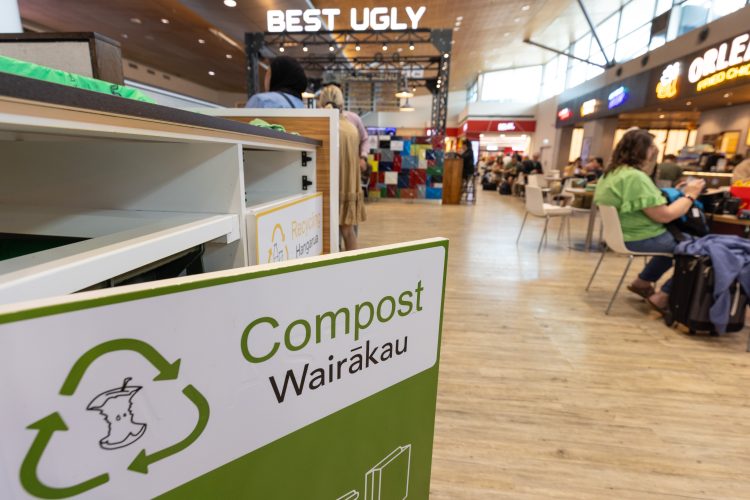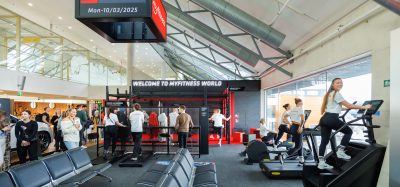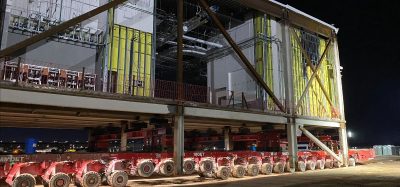Collaboration: the key ingredient to minimising waste at Auckland Airport
- Like
- Digg
- Del
- Tumblr
- VKontakte
- Buffer
- Love This
- Odnoklassniki
- Meneame
- Blogger
- Amazon
- Yahoo Mail
- Gmail
- AOL
- Newsvine
- HackerNews
- Evernote
- MySpace
- Mail.ru
- Viadeo
- Line
- Comments
- Yummly
- SMS
- Viber
- Telegram
- Subscribe
- Skype
- Facebook Messenger
- Kakao
- LiveJournal
- Yammer
- Edgar
- Fintel
- Mix
- Instapaper
- Copy Link
Posted: 4 April 2025 | Colinda Rowe | No comments yet
Colinda Rowe, Waste Minimisation Manager at Auckland International Airport in New Zealand, writes exclusively for International Airport Review


Credit: Auckland Airport
Airports function as ecosystems, with numerous stakeholders—from airlines to aviation security, retailers, baggage handlers, border agencies, and even construction companies— all playing crucial roles in ensuring smooth operations and a positive customer experience.
They also all, inevitably, generate waste. To effectively manage waste across the airport, a targeted and co-ordinated approach tailored to each stakeholders’ waste profile is essential.
With 18.5 million passengers travelling through Auckland Airport each year, enjoying the opportunity to eat, drink and shop, it is critical to engage all airport stakeholders in our waste minimisation efforts to achieve meaningful reductions in waste through avoidance, reduction, reuse, composting, and recycling.
Terminals
Food waste is one of the largest waste streams at airports. With over 40 food and beverage outlets and six premium lounges in the Auckland Airport terminals, a co-ordinated strategy is necessary to divert food waste from landfills.
This has involved providing separate bins in kitchens to help busy lounge and concessionaire staff easily sort food waste, as well as training food court cleaning staff to identify and remove contamination from public-facing food waste bins. In airside areas extra training was provided to kitchen and wait staff to ensure we keep within the biosecurity requirements and regulations.
As a result, we have doubled the amount of food waste sent to composting year-on-year, achieving a diversion rate of around 12% last year, with 225 tonnes composted in the 12 months to December 2024.
We have a purpose-built facility where we separate empty plastic bottles, newspapers, and menu cards from aircraft cabin waste for recycling.”
Preventing waste generation is the most effective way to reduce waste. Offering reusable serving ware in eateries is a key part of this effort, with our licensing rules increasingly mandating its use. Currently, 50% of terminal food and beverage outlets provide reusable crockery and cutlery. Where single-use items remain, they are predominantly commercially compostable and can be included in our food waste collections sent for composting.
This additionally eliminates the issues encountered with plastic food packaging often being rendered unsuitable for recycling due to contamination by food waste.
Biosecurity in NZ is regulated by the Ministry of Primary Industries (MPI) who impose strict controls on waste management in airside areas. In New Zealand it is sent for steam sterilisation and deep burial in landfill. However, we have developed processes in collaboration with MPI to recover recyclable materials from low-risk areas.
We have a purpose-built facility where we separate empty plastic bottles, newspapers, and menu cards from aircraft cabin waste for recycling. We also recover clean recyclables and kitchen food waste from premium lounges in the international terminal.
Our partnerships extend beyond waste diversion. We have collaborated with CAA/Aviation Security and our waste collection provider to repurpose prohibited items removed from traveller checked luggage. A common example is batteries, many of which are still in their original packaging. Since implementing a donation process six months ago, we have redirected over 1,000 kg of alkaline batteries to a local charity who donate them to schools and other charitable purposes.
We work with charitable organisations in other areas too, for instance, unclaimed lost property items such as clothing, prams, blankets, sporting goods, musical instruments and household goods are donated to a local organisation that supports people coming out of rehabilitation facilities, women’s refuge, refugees and families in need of support.
Over the eight years since this initiative began, it has expanded to include contributions from airport hotels and baggage service providers, leading to the donation of 9,000 kg of goods in the past year alone.
To further drive sustainability, we have established a Retailer Sustainability Working Group, where retail tenants attend quarterly workshops to share best practice and explore waste reduction strategies. These well-attended sessions promote collaboration and continuous improvement across terminal businesses.
Construction
Our waste reduction efforts are not limited to terminal operations. The airport is undergoing a significant period of development, with numerous construction projects planned over the next five years and beyond. Managing waste efficiently in these projects is a priority as we build a resilient, future-ready airport.
Our infrastructure development projects typically target a 70% diversion of construction waste from landfill, however, with the $800 million development of our new integrated terminal, we have an agreement with our construction partner to be more ambitious and achieve 80% diversion on this project.
They are committed to this target and have implemented initiatives such as on-site materials recovery into various recycling streams, reusable packaging for some building materials and working with a waste provider specialised in C&D waste recovery and processing.
We also reuse materials on site where possible, for example, 100,000 tonnes of waste concrete from our airfield operations were crushed and used as a solid base layer for our northern airfield expansion project.
Leading the way
As the largest airport in the country, where 75% of all New Zealand passengers travel to and from Auckland Airport, we have the size and scale to try new things and be a leader in sustainability.
we have doubled the amount of food waste sent to composting year-on-year”
In a national first, we have installed LED lighting along the 3.6 km runway. These fittings last 15 times longer than the halogen bulbs previously used, significantly reducing waste from light replacements.
Another key initiative is reducing the offering of single-use hand towels in bathrooms. By transitioning to jet air hand dryers across terminal and office facilities, we have eliminated hand towels from many spaces, preventing 35 tonnes of landfill waste annually.
Achieving our targets
These initiatives all contribute to our overarching goal of reducing waste. We have a target to reduce waste to landfill by 20% by 2030 from a 2019 base line. As waste volumes are closely tied to traveller numbers and these numbers are expected to be around 25% higher in 2030 compared to 2019, our success depends on decreasing waste generated per traveller.
By fostering collaboration, innovation, and sustainable practices, we are making significant strides toward a cleaner, more efficient airport environment.
About the author


Credit: Auckland Airport
Colinda Rowe is the Waste Minimisation Manager at Auckland Airport. She has over 20 years of experience in implementing circular and waste reduction initiatives across both corporate and community sectors, in a variety of industries and roles including Procurement, Project Management and Business Development.
Related topics
Airport construction and design, Airport development, Food and Beverage (F&B), Innovation, Operational efficiency, Passenger experience and seamless travel, Retail, Social responsibility, Sustainability, Sustainable development, Terminal operations, Workforce
Related airports
Related organisations
Auckland Airport, CAA/Aviation Security, Ministry of Primary Industries (MPI), Retailer Sustainability Working Group


















